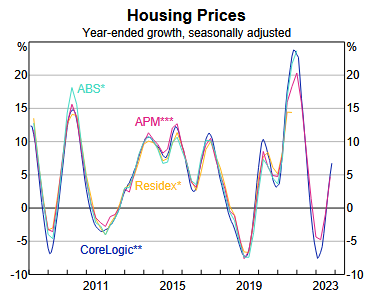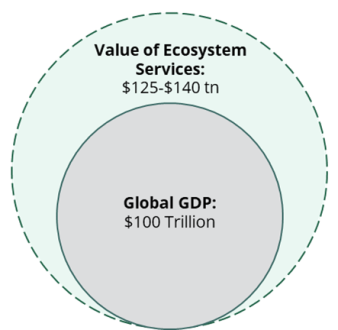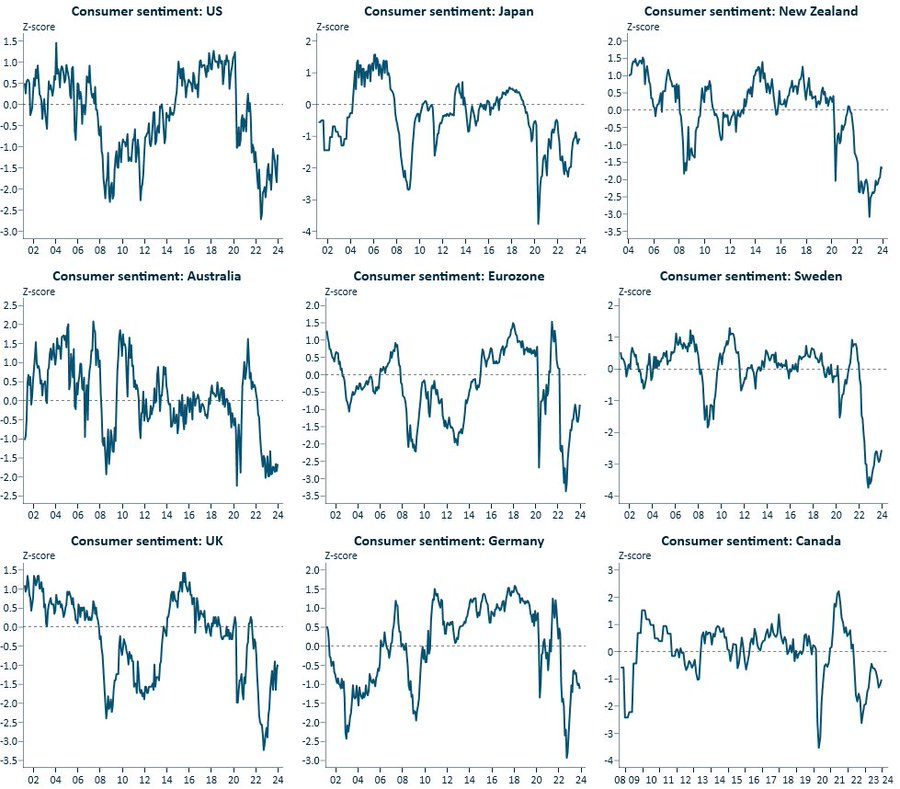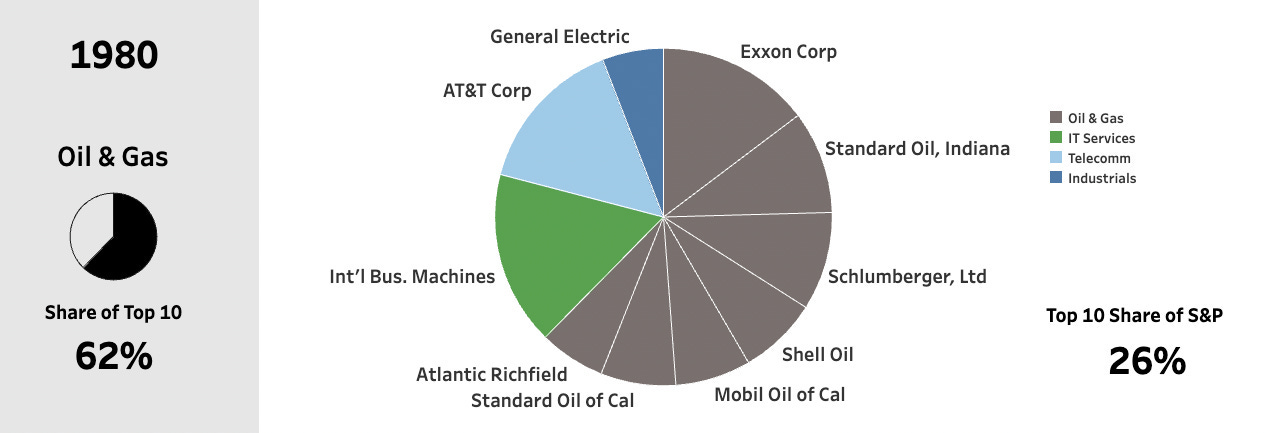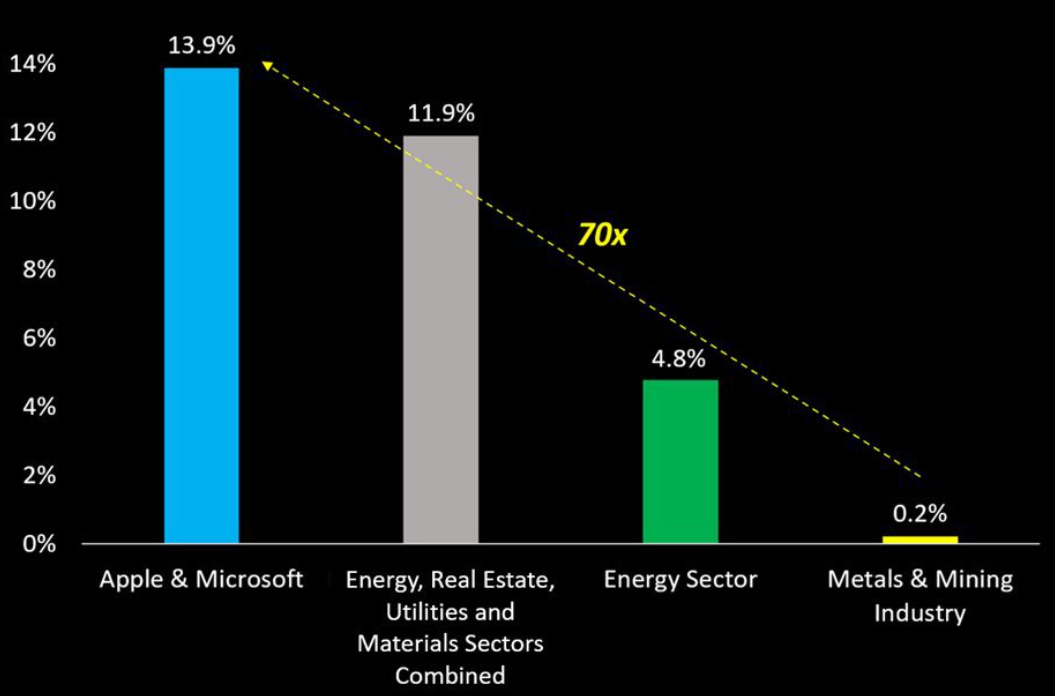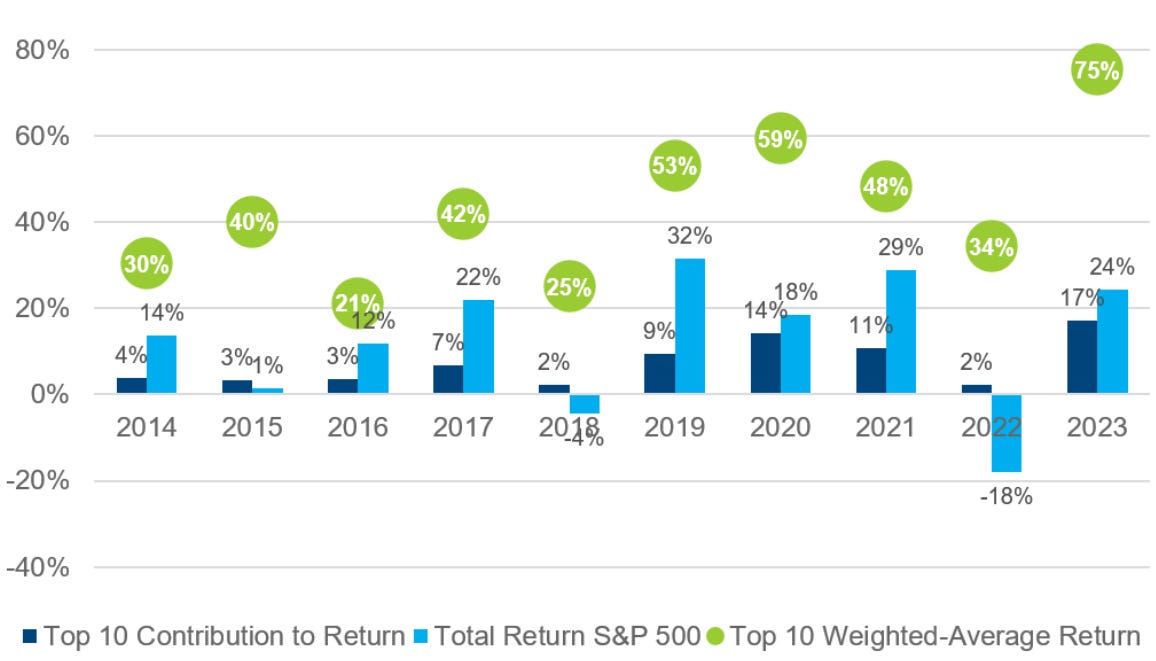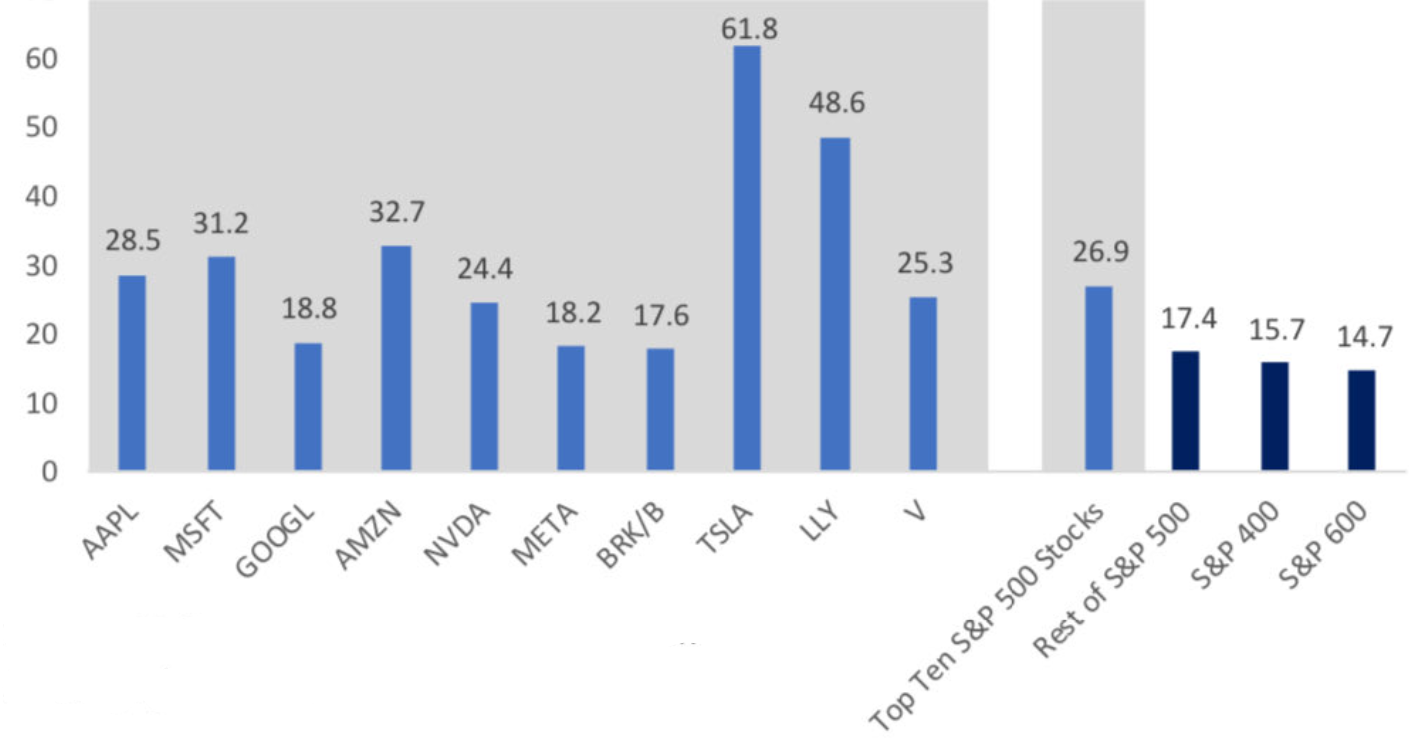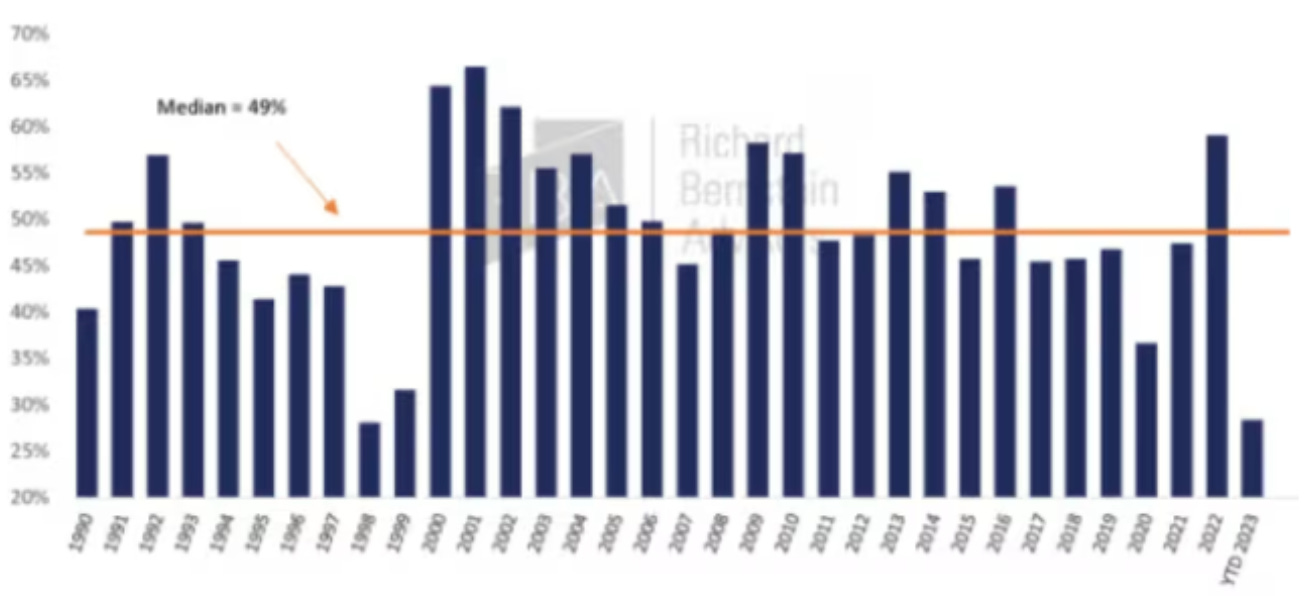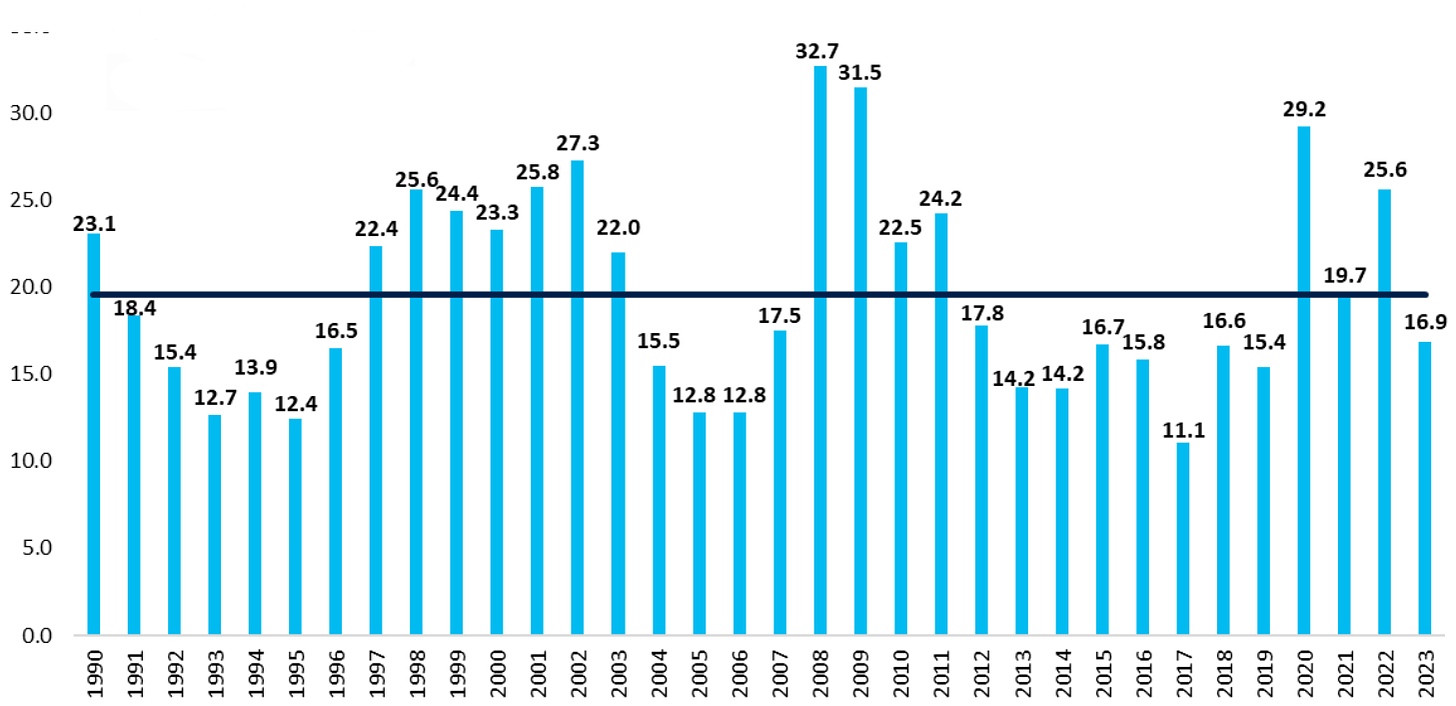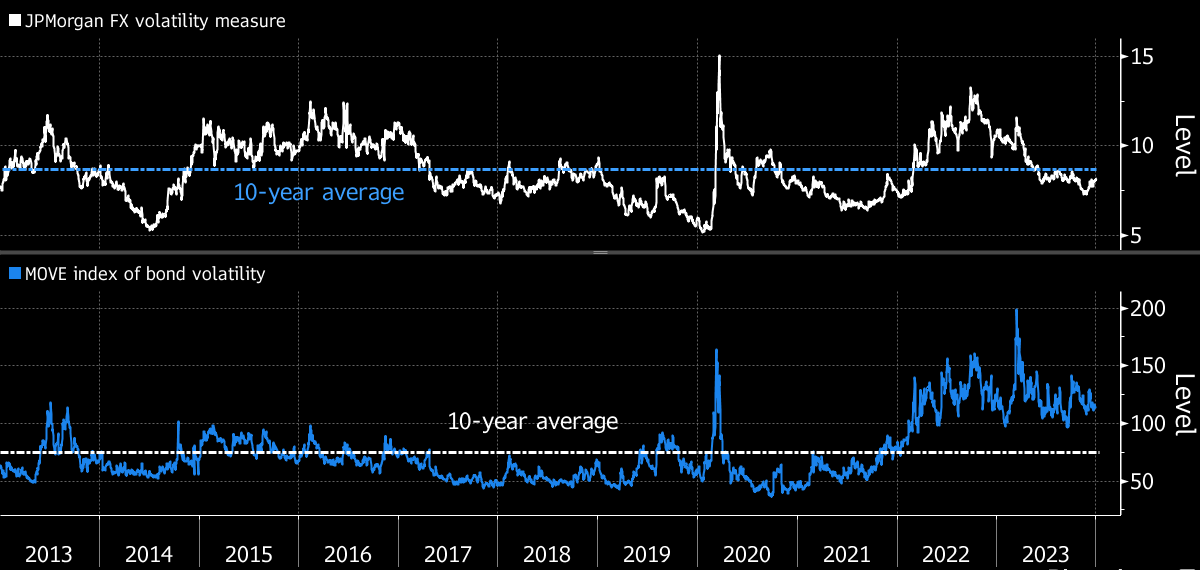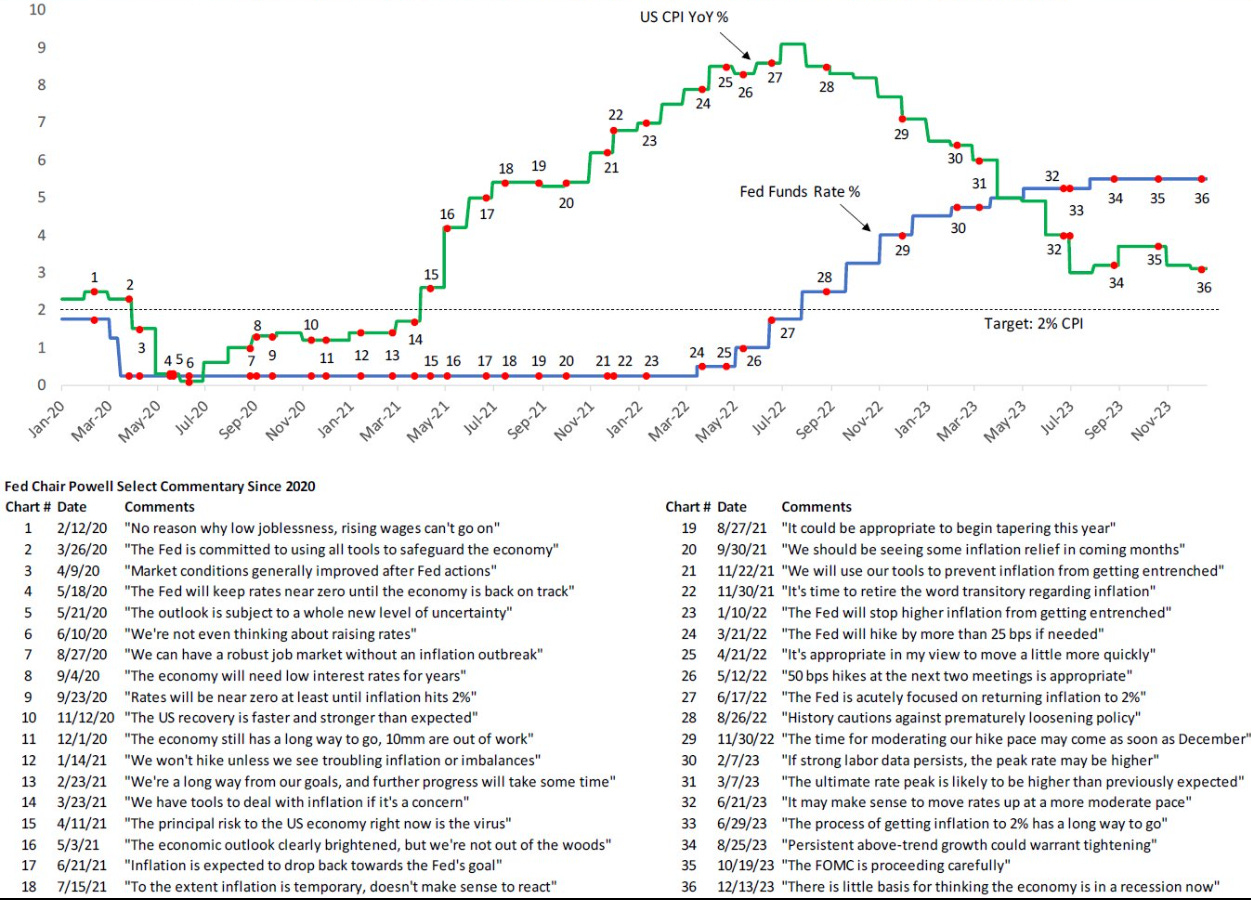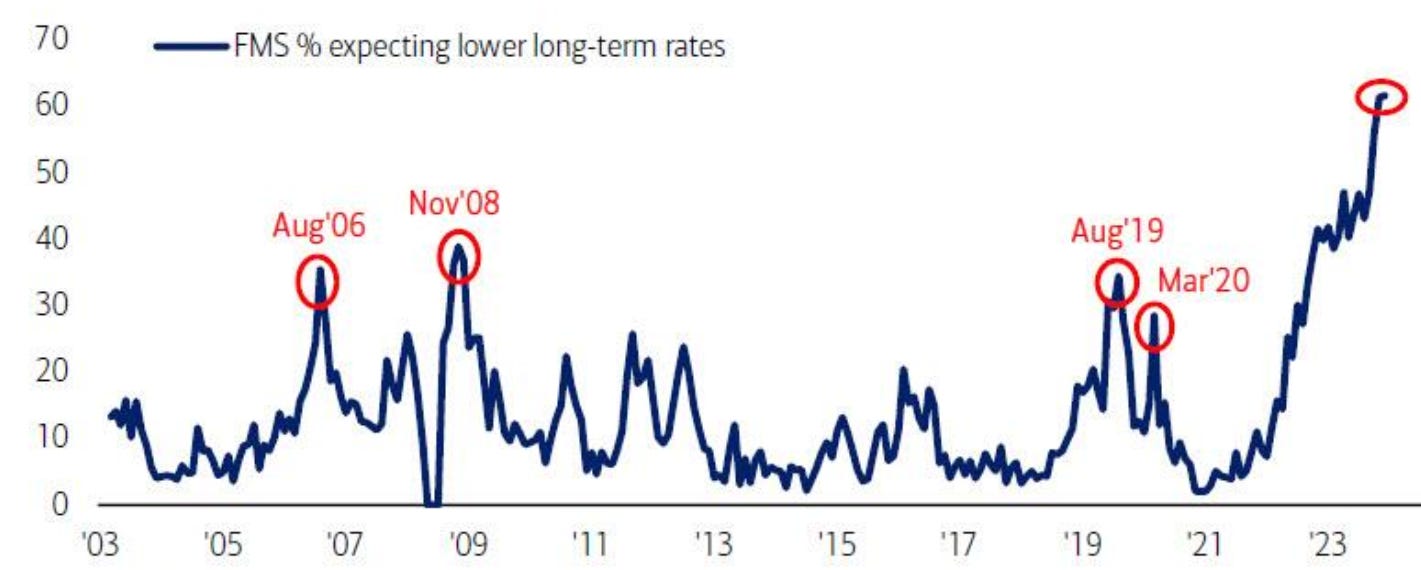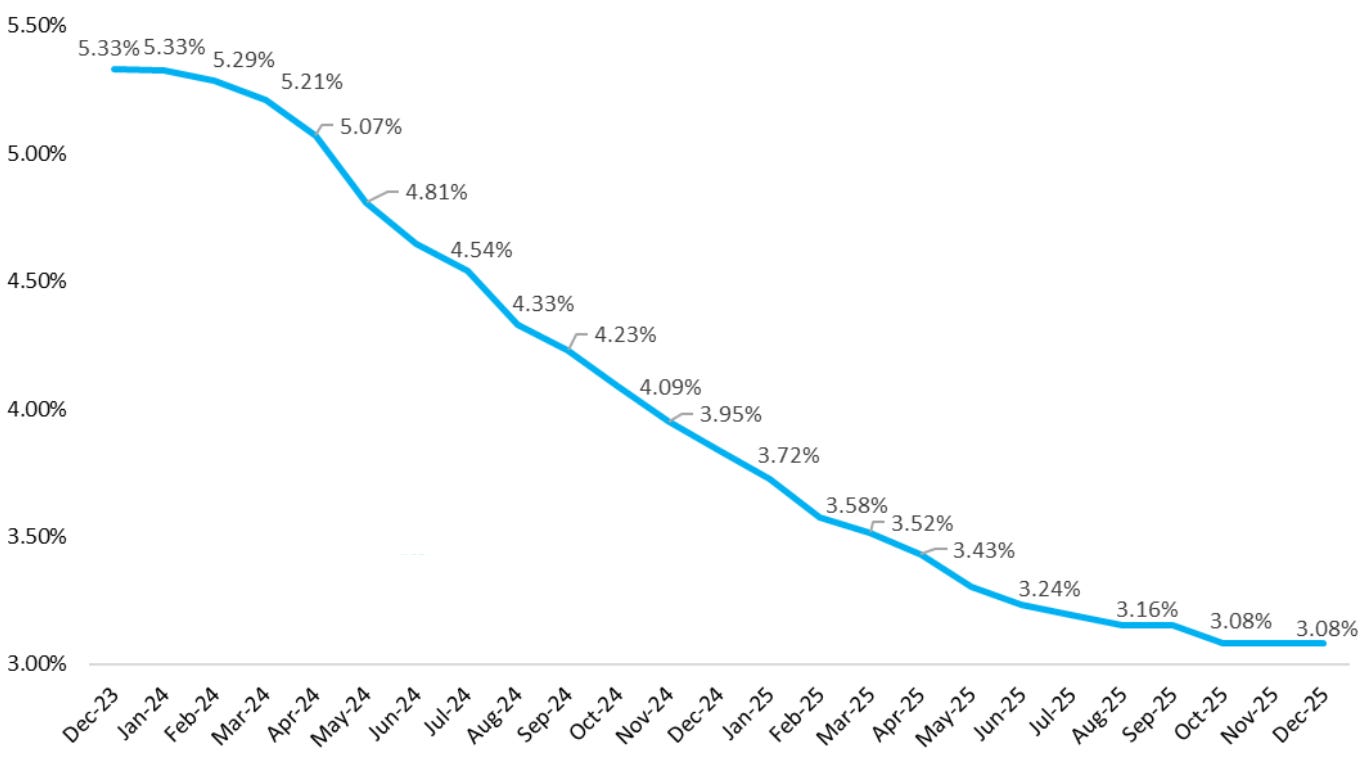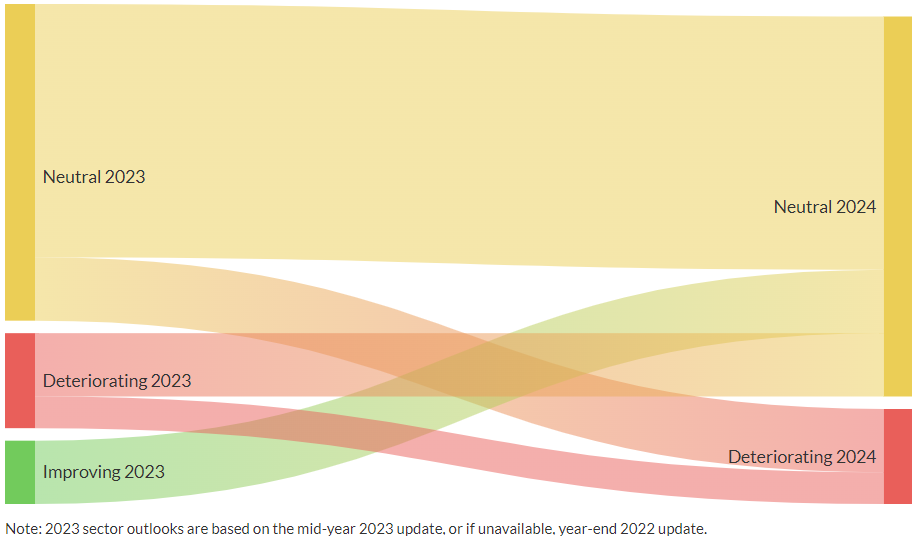
News

Resilient growth and moderating inflation in the US reflect positive supply shocks that are almost exhausted. A slowdown followed by a mild recession in 2024 is the most likely scenario.
9 Feb 2024 - Private markets house view for 2024
|
Private markets house view for 2024 abrdn January 2024 What's in store for private assets?Resilient growth and moderating inflation in the US reflect positive supply shocks that are almost exhausted. A slowdown followed by a mild recession in 2024 is the most likely scenario. European economies are already weak and we expect them to remain so until the middle of next year - although positive real income growth should limit the size of the downturn. Most central banks have finished hiking rates and should begin cutting in 2024, as inflation fades further. Chinese policy easing is now stabilising activity, but there are long-term headwinds. Emerging markets are benefiting from moderating inflation and they are entering a policy-easing cycle. As we analyse the private markets landscape, it is important to consider the latest trends in key sectors and to address the evolving macro backdrop. Private equityIn a high-interest-rate environment, persistent inflation continues to draw down deal appetite in both Europe and the Americas, particularly regarding exit strategies. Many General Partners continue to extend out their exit horizons, avoiding lower valuations in anticipation of better market conditions in the future. The latest third-quarter valuation multiples suggested that valuations are correcting at a modest pace across North America and Europe. In terms of sectors, financials and consumers have suffered the worst peak-to-trough declines while energy valuations are still rising. Technology multiples held up well heading into 2023 but have been hit since. However, they are still at a premium relative to other sectors. We continue to see mid-market companies in Europe and the Americas contributing to consumption growth in urban centres. Therefore, we will focus on opportunities to invest in recession-proof industries like healthcare and information technology that capture global long-term trends. It is crucial to focus on upper-quartile managers who have a proven track record of unlocking value in portfolio companies' balance sheets. Private creditDemand for private credit continues to remain robust as traditional lenders pull back. Given the elevated returns, expanded spreads, and protection from a low correlation to gross domestic product, the risk-return dynamics of private credit have become extremely appealing. Careful deal selection for assets with downside risk remains crucial. Default rates remain low by historical standards, but they are anticipated to rise in private credit as many private credit managers have not been fully tested since the Global Financial Crisis (GFC). In addition, the market dynamics are fundamentally different from the previous cycle. Dislocation in the market is creating good opportunities, and lenders are in a position to demand stronger covenants and to execute deals at attractive risk-adjusted returns. Selectivity remains key. And with signs of distress and increasing default rates, high-quality deals are vital. InfrastructureGlobal infrastructure markets grappled with several shock factors over the year. These stemmed from macro and micro drivers, with a slower fundraising environment, increased financing costs, geopolitical risks, and valuation pressures (to name a few). Despite facing volatility, core private infrastructure assets showed resilience. They provided inflation protection, cost pass-through mechanisms, and robust cashflow generation. The energy transition sectors, for example, continued to grow and large deals still closed. The US Inflation Reduction Act (IRA) provides a strong tailwind for investing in infrastructure spending. For example, technologies such as hydrogen, carbon capture and transport are attractive structural opportunities. Europe is positioning itself to increase domestic commodity supply and energy autonomy by expanding investments in renewable energy. Globally, digital and telecom infrastructure continues to ride a long boom, bolstered by macro headwinds and rising opportunities in digitisation. Real estateThe global real estate market is progressing steadily through this current downturn. Capital markets (yields) have been recalibrating in response to higher interest rates and higher debt costs, which have been much faster than the correction following the GFC. In most regions, values have fallen between 15% and 30% in just two-to-three quarters, but we believe this revaluation phase is close to the end. Real estate yield spreads remain tight versus the risk-free benchmark, but spreads are improving slowly - although they have yet to offer enough illiquidity premia. In Europe, logistics have repriced most aggressively but with more to go for secondary offices. In North America, we are observing cap-rate expansion starting to slow down across sectors. Office defaults are becoming more visible in the US and several high-profile valuations are bringing expectations down to more realistic levels. Meanwhile, across industrials and logistics, renewal activity has remained robust, hence values have held up with a strong macro backdrop. In Asia-Pacific, yields in most markets have barely moved since end-2021. As such, we think there are likely more outward yield shifts that need to take place in the next year. While logistics properties in many markets will likely see higher yields, the negative impact on capital values is expected to be mitigated by further rental upside. Natural resourcesActivity across natural resources is heavily driven by the global energy market. Energy prices continue to be the driving force of investment across the asset class, which is set to continue. The recent conflict in the Middle East has caused further uncertainties, which had started to fall in June. As the renewable energy transition continues to play out, metal and mining strategies have also seen increasing demand, given some metals are also essential in generating renewable energy. While growth in renewables fundraising continued, it is a multi-year push toward decarbonisation. Interestingly, investment flows in North America renewables seem to be catching up with Europe. This can be largely explained by the IRA. In Europe, government infrastructure spending is expected to increase to reflect its transition to a low-carbon economy. Going into 2024, it's likely that the demand for energy will be sustained, but there is uncertainty about how long this could last. However, investment opportunities across natural resources will continue, with the emergence of low-cost renewable power and the growth of carbon markets. This includes the role of timber in the global transition to net zero and lower emissions. Author: Lulu Wang, Portfolio Strategist, Private Markets |
|
Funds operated by this manager: Aberdeen Standard Actively Hedged International Equities Fund, Aberdeen Standard Asian Opportunities Fund, Aberdeen Standard Australian Small Companies Fund, Aberdeen Standard Emerging Opportunities Fund, Aberdeen Standard Ex-20 Australian Equities Fund (Class A), Aberdeen Standard Focused Sustainable Australian Equity Fund, Aberdeen Standard Fully Hedged International Equities Fund, Aberdeen Standard Global Absolute Return Strategies Fund, Aberdeen Standard Global Corporate Bond Fund, Aberdeen Standard International Equity Fund, Aberdeen Standard Multi Asset Real Return Fund, Aberdeen Standard Multi-Asset Income Fund Source: |

8 Feb 2024 - Bond Market Insights and Outlook for 2024
|
Bond Market Insights and Outlook for 2024 JCB Jamieson Coote Bonds January 2024 Bonds finished 2023 strongly following the market categorically rejecting the 5.00% level in US and Australian 10-year bonds in October. This has provided a solid base for bonds in 2024 following the global peak in yields and the end to the global central bank hiking cycle. The market was comforted with the lower inflation readings and the weaker set of economic data. Bond supply dynamics also played a part when the narrative of increasing government deficits was alleviated with US Treasury projections in the order of 100 billion less than the market was expecting. Markets have moved to more aggressively price in easing from the US Federal Reserve (US Fed), Bank of England and European Central Bank given declining inflation with goods inflation the driver. While time will tell whether November's cash rate hike from the Reserve Bank of Australia (RBA) was the last in the cycle, our view is that we are either at, or at least very near, the peak in cash rates. If history is a guide, cash rates tend to remain on hold at the peak for an average of eight months. While this is certainly not an exact science, based on what we currently know about the economic outlook and market pricing, we anticipate that the RBA will start to loosen monetary policy in 2024 following in the slipstream of its global central bank counterparts. Predicated on this view, any back up in yields will provide a decent opportunity to increase duration exposure, particularly in the 3-to-5-year sector where historically the curve steepens as markets approach their first rate cut. The monetary tightening has pushed the global credit impulse to its weakest level since the Global Financial Crisis, which implies weaker demand growth moving forward placing pressure on the jobs market. High delinquency rates and credit card balances currently support anemic consumer confidence and may begin testing both consumer resilience and the ability of employers to maintain employment with margins under pressure. The job market in 2024 will be the main determinant of whether we travel down the path of a 'hard landing' with the commensurate aggressive easing of short-term interest rates and much higher bond prices with the recent rally into year-end just an entrée to what can be served up. MARKET OUTLOOK: ARE RECESSIONARY SIGNAL LIGHTS STILL FLASHING RED?US recessionary indicators are all signaling a code red alert. An inverted yield curve persisting for 18 months, coupled with a 19-month sequential decline in the Leading Indicator Index, has an infallible record in predicting a US recession. In a soft-landing scenario, the US Fed will need to make approximately a 300 basis points cut just to reach a neutral rate setting. However, in the event of a full-blown recession, we are anticipating a need for around 500 basis points of easing. The December US Fed meeting validated the end of the hiking cycle in short term rates with US Fed Chairman, Powell commenting that "you want to cut rates well before inflation is at 2%" otherwise it would be too restrictive. The US Fed also downgraded its inflation forecast and alluded to three cuts in 2024 as Powell showed concern over keeping rates too high for too long. The inflation trajectory continues a downward path and heading into 2024 this is expected to persist - we still have some hefty inflation prints dropping out of the index so we should get inflation falling on a year-on-year basis for the first five months of the year if we continue to print similar numbers that have been recorded lately. Continued weakness in energy prices and lower wage growth through a deteriorating employment market would also be supportive of the slowing inflation period. The picture in Australia is also encouraging with the inflation story lagging the global softening prices thematic. Given the transmission mechanism of Australian interest rates, we would anticipate this to play catch up in the first quarter of next year. As the new year commences, 2024 is ripe for geopolitical developments with 40 national elections on the calendar from Taiwan at the start of the year through to the US presidential election in November. The potential for a changing of the guard in foreign policy heightens the chances of an escalation or aggravation amongst countries and should fly in the face of the complacency that currently prevails in risk markets and encourage a flight-to-quality demand for sovereign bonds. After an extended period of ultra-low bond yields, followed by some painful years of adjustment higher, bonds are arguably in better shape now than they have been in several years, offering a sense of stability and optimism for investors in the current financial landscape. Funds operated by this manager: CC Jamieson Coote Bonds Active Bond Fund (Class A), CC Jamieson Coote Bonds Dynamic Alpha Fund, CC Jamieson Coote Bonds Global Bond Fund (Class A - Hedged) |

5 Feb 2024 - New Funds on Fundmonitors.com
|
New Funds on FundMonitors.com |
|
Below are some of the funds we've recently added to our database. Follow the links to view each fund's profile, where you'll have access to their offer documents, monthly reports, historical returns, performance analytics, rankings, research, platform availability, and news & insights. |
|
|
||||||||||||||||||||||
| Clearbridge RARE Infrastructure Value Fund - Hedged | ||||||||||||||||||||||
|
||||||||||||||||||||||
| View Profile | ||||||||||||||||||||||
| ClearBridge RARE Infrastructure Value Fund - Unhedged | ||||||||||||||||||||||
|
||||||||||||||||||||||
| View Profile | ||||||||||||||||||||||
| ClearBridge RARE Emerging Markets Fund - Unhedged | ||||||||||||||||||||||
|
||||||||||||||||||||||
| View Profile | ||||||||||||||||||||||
| ClearBridge RARE Infrastructure Income Fund - Hedged | ||||||||||||||||||||||
|
||||||||||||||||||||||
| View Profile | ||||||||||||||||||||||
| ClearBridge RARE Infrastructure Income Fund - Unhedged | ||||||||||||||||||||||
|
||||||||||||||||||||||
|
|
||||||||||||||||||||||
| Contrarius Australia Balanced Fund | ||||||||||||||||||||||
|
||||||||||||||||||||||
| Contrarius Australia Equity Fund | ||||||||||||||||||||||
|
||||||||||||||||||||||
| View Profile | ||||||||||||||||||||||
|
Want to see more funds? |
||||||||||||||||||||||
|
Subscribe for full access to these funds and over 800 others |

Unless that is, you have been invested in the US Magnificent Seven. It has been a year of extraordinary moves in things we never saw coming.
1 Feb 2024 - A Fairytale of New York (NYSE and the Nasdaq)
|
A Fairytale of New York (NYSE and the Nasdaq) Marcus Today December 2023 |
2023 has been a year that most Australian investors would like to forget.
Source: Marcus Today . Source: Marcus Today. Unless that is, you have been invested in the US Magnificent Seven. It has been a year of extraordinary moves in things we never saw coming. Bitcoin is the best performing 'asset' - and I use that term loosely. US Bond markets have staged an extraordinary rally in the last month or so, as yields spiked and then collapsed. Iron ore has defied gravity and hit $200 in AUD terms, almost back to the halcyon days during CV-19, or the big gains we saw before the GFC - and all this without the bazooka stimulus we have come to expect from the Chinese. In fact, Chinese property seems to have gotten worse over the year. Here, the retailers have had a great year despite all the rate rises. Where was that mortgage cliff that traumatised markets? It's coming apparently. Many have suffered, but we now have a pause in the inflation offensive. Rates are normalising. The last decade was abnormal! What happened to house prices? They just kept going higher.
Source: ABS, APM, CoreLogic, Residex. Trophy homes changed hands at record prices. Young people have given up on the Great Australian Dream. The Bank of Mum and Dad took a pounding this year - if you could find them on their holiday in Europe that is. This time last year, lithium was riding high at extraordinary levels, and now we have gone from rooster to feather duster. Much like another white powder craze in milk powder! White line fever. Remember that? A2 Milk (ASX: A2M) hit 20 bucks - madness. Plenty of that around. Gone now though. Some brokers were sounding the warning bell on lithium prices and were 'pooh-poohed' for their view. As General Melchett once said in Blackadder, you should never pooh-pooh a pooh-pooh. Wise words darling, eh? At one stage this year, we had billionaires fighting to keep lithium assets Australian-owned. Hats off to you Gina. You succeeded. Unfortunately, it was at a cost. Quite a big cost. For everyone. In hindsight, it looks like two bald men fighting over a comb. Origin Energy (ASX: ORG) saw off the 'Brookfield Mounties' after a rear-guard defence from Australian Super, though several other icons fell - Newcrest is no longer and OZ Minerals (ASX: OZL) fell to BHP (ASX: BHP). Is the ASX shrinking to greatness? Then there are the gold miners. Who would have 'thunk' that gold would hit an all-time high whilst rates were going higher? Gold pays no dividends and actually costs money to store. It has always puzzled me why we spend so much time and money digging it up, making it into a nice bar shape, and then burying it again in an underground vault. The sector is up 17%. Still, many things in life puzzle me. I struggled with The Book of Mormon! Was that just me? This year we had the rise of AI and the machine. I thought Nvidia was a skin care product until this year! Even AI didn't see that one coming. We also had a year where GLP-1 drugs offered a 'miracle cure' for obesity, and killed CSL (ASX: CSL) and Resmed (ASX: RMD) in the process. More iconic falls. The consensus last year was that the US economy would experience a recession. The question was whether we were going to get a soft landing or a hard landing. Well, no recession. The experts got that wrong too. In fact, there is not much the experts got right. Oil was supposed to hit $100 due to Ukraine, and then Gaza. Nope. Oil is struggling, even if the Saudis are cutting production. What to expect in 2024.Firstly, experts have no monopoly on making daft predictions. Just because they are on TV or interviewed in the media, I think 2023 shows how wrong they can be. There is one certainty in 2024 that even the experts will get right. The US Presidential Election. Everything to play for, and everything to lose. Are we really headed back to the chaos of the Trump era? It seems a distinct possibility. We are not talking about it yet - but we will. The US Election cycle kicks off early in 2024. The experts are still forecasting a recession and a landing of some sorts in 2024. Hard or soft. Similar arguments triggered a war in Lilliput. Which end of the egg to crack? The markets are now pricing in quite savage rate cuts in the US in 2024. The reason is the US economy is crashing. Is it? I am not sure the Fed will be that aggressive. The economy is slowing, but crashing in an election year seems unlikely. Powell will want to keep his job and the Fed independent. Trump is an agent of change. There are two themes that I think will manifest in 2024. Both out of favour. Both troubled, and both seeing serious negativity. The first one is lithium. At some stage, and we are not there yet, the price will have fallen so much that all that supply coming on stream will struggle to get funding. Plenty of it will be uneconomic. All those gold miners who switched to lithium may have to switch back to gold! Remember the dot-com boom? The miners became web-masters and then had to switch back! When was the last time that we saw a high-profile off-take agreement? Yep, I can't remember one. My 'go-to' would be Pilbara Minerals (ASX: PLS). It still has 20% shorted. A market cap of around $10bn with a cash stash and no problems with the US, as far as Chinese ownership is concerned. Remember when Liontown (ASX: LTR) was valued at nearly $7bn for a project still under construction? We are not at peak bearishness in the sector as yet, but at some stage in 2024, there will be a huge bounce. The other one which has been taken out the back is the oil and gas sector. BHP is looking pretty smart with its jettison of the oil and gas assets to Woodside (ASX: WDS). If you had said there would be a war in the Middle East and interest rates would be at 4.35%, there would not be many experts who would have predicted consumer discretionary stocks would be out partying, and oil and gas stocks suffering from a serious hangover. Yet here we are. I think the sell-down in oil has been overdone. WDS is the premier way to go with this, and I still like Karoon (ASX: KAR), which has de-risked from a one-trick pony with the recent Gulf of Mexico acquisition. Both a big and a smaller one are buys for a better 2024. Finally, I was asked to pick a stock for an Advent Calendar segment recently. I had two that I liked: Treasury Wine (ASX: TWE) for a reopening of China year, and Zip (ASX: ZIP). I know. Crazy, but the US consumer is still spending, just finding different ways to pay. I think we are all guilty of that. Regulation is coming here, and that will provide some certainty. The key is the US, the growth of BNPL, and the pesky ZIP balance sheet. Could 2024 be the year we are talking BNPL again? Maybe, but then again, I have been wrong many times before. Why should this year be any different? The good news is that next year, ChatGPT will be writing a similar article, and I will be redundant. You can blame it then. Author: Henry Jennings, Senior Market Analyst, and Media Commentator |
|
Funds operated by this manager: |

31 Jan 2024 - Global Matters: 2024 outlook

30 Jan 2024 - Airlie Quarterly Update - January 2024
|
Airlie Quarterly Update - January 2024 Airlie Funds Management January 2024 |
|
Emma Fisher provides her perspective on how the Australian equity market played out in 2023 and the outlook for the year ahead. Emma also discusses movements within the portfolio and the approach to position sizing. Funds operated by this manager: Important Information: This material has been delivered to you by Magellan Asset Management Limited ABN 31 120 593 946 AFS Licence No. 304 301 trading as Airlie Funds Management ('Airlie') and has been prepared for general information purposes only and must not be construed as investment advice or as an investment recommendation. This material does not take into account your investment objectives, financial situation or particular needs. This material does not constitute an offer or inducement to engage in an investment activity nor does it form part of any offer documentation, offer or invitation to purchase, sell or subscribe for interests in any type of investment product or service. You should obtain and consider the relevant Product Disclosure Statement ('PDS') and Target Market Determination ('TMD') and consider obtaining professional investment advice tailored to your specific circumstances before making a decision about whether to acquire, or continue to hold, the relevant financial product. A copy of the relevant PDS and TMD relating to an Airlie financial product or service may be obtained by calling +61 2 9235 4760 or by visiting www.airliefundsmanagement.com.au. Past performance is not necessarily indicative of future results and no person guarantees the future performance of any financial product or service, the amount or timing of any return from it, that asset allocations will be met, that it will be able to implement its investment strategy or that its investment objectives will be achieved. This material may contain 'forward-looking statements'. Actual events or results or the actual performance of an Airlie financial product or service may differ materially from those reflected or contemplated in such forward-looking statements. This material may include data, research and other information from third party sources. Airlie makes no guarantee that such information is accurate, complete or timely and does not provide any warranties regarding results obtained from its use. This information is subject to change at any time and no person has any responsibility to update any of the information provided in this material. Statements contained in this material that are not historical facts are based on current expectations, estimates, projections, opinions and beliefs of Airlie. Such statements involve known and unknown risks, uncertainties and other factors, and undue reliance should not be placed thereon. No representation or warranty is made with respect to the accuracy or completeness of any of the information contained in this material. Airlie will not be responsible or liable for any losses arising from your use or reliance upon any part of the information contained in this material. Any third party trademarks contained herein are the property of their respective owners and Airlie claims no ownership in, nor any affiliation with, such trademarks. Any third party trademarks that appear in this material are used for information purposes and only to identify the company names or brands of their respective owners. No affiliation, sponsorship or endorsement should be inferred from the use of these trademarks. This material and the information contained within it may not be reproduced, or disclosed, in whole or in part, without the prior written consent of Airlie. |

25 Jan 2024 - Glenmore Asset Management - Market Commentary
|
Market Commentary - December Glenmore Asset Management January 2023 Globally equity markets performed strongly in December. In the US, the S&P500 rose +4.4%, the Nasdaq was up +5.5%, whilst in the UK, the FTSE100 increased +3.8%. Bond markets were a big driver in sentiment towards equities in the month, where bond yields continued to fall as inflation data softened, which in turn has implications for future monetary policy. In the US economy, many bond investors now believe we have seen the peak in interest rates, with prospects for rate cuts in 2024 now a possibility. In Australia, we believe it is more realistic to expect rates to stay at current levels until there is clear evidence that inflation is falling to targeted levels. In the US, the 10-year bond rate fell -42 basis points to close at 3.84%. For context, the bond yield has fallen ~1% from its October highs where it reached just under 5%, which is a very material decrease. In Australia, the 10-year government bond fell -45 basis points to close at 3.96%. The AUD/USD exchange rate appreciated 2 cents to close at US$0.68, as investor risk appetite increased. Funds operated by this manager: |

24 Jan 2024 - How Investors Can Think About the Value of Nature
|
How Investors Can Think About the Value of Nature Redwheel December 2023 |
|
Nature matters - our individual human experience of nature is precious. Its value is immeasurable. Framing nature as the basis for Natural Ecosystem Services concentrates our focus on the more tangible contributions nature provides the economy and society. Ecosystem Services
Source: World Economic Forum, World Bank as at 2022. The information shown above is for illustrative purposes only and is not intended to be, and should not be interpreted as, recommendations or advice. These Services are commonly categorised as:
For instance, primary, secondary and working forests are a crucial source of Nature Services. Accounting for more than 30% of the planet's land[2], they offer Provisioning Services including timber, fibre, food and medicinal plants. They also provide Regulating Services including a cooling mechanism; local precipitation regulation; protection from soil erosion, landslides and floods; water filtering; and carbon sequestration. Forests offer a range of Cultural services including leisure activities, aesthetic pleasure and psychological benefits to those who enjoy them. They also remain a source of biodiversity with potentially valuable and undiscovered genetic material. Some Natural Services can be replaced with artificial processes. For instance, animal pollination services are worth more than $217 billion a year to the agricultural sector [3] and contribute to 35% of the world's crop production [4]. Many pollinators are threatened by a combination of habitat loss, pathogens and pollution, raising concerns for food security. Artificial pollination methods ranging from manual pollination to experimental micro-drone technology have some limited ability to replicate animal pollination services. In many cases it is simply not feasible to replicate Natural Ecosystem Services. Counting the cost More than half of global GDP is deemed to be highly or moderately exposed to nature [7] ; human health and wellbeing is highly dependent upon its Regulating Services which afford us access to clean air and water. Thus, the degradation of biodiversity and Ecosystem Services represent a material risk to the global economy as well as human health and wellbeing. The World Bank estimates that "business as usual" would result in the loss of $90 - $225 billion of real GDP by 2030, depending on the extent to which natural carbon capture services are lost) [8]. Change is coming Evidence of the physical risk associated with inaction is stimulating policy responses. The historic Kunming-Montreal Global Biodiversity Framework agreed in 2022 sets out twenty-three targets [9] to be achieved by 2030 in order that we remain on track for the long-term goals associated with the 2050 Vision for Biodiversity. Whilst policymakers grapple with the challenges associated with delivering these targets, other stakeholders are beginning to assess both their dependency and impact on nature. We believe, these are crucial first steps towards addressing physical risk associated with dependency and transition risk associated with impact. The Taskforce on Nature-related Financial Disclosures (TNFD) offers guidance and recommendations for the process of measurement and disclosure to enable corporates to quantify the value of nature to their business. This is a key step in the integration of nature into decision making. What we can measure; we can address
Given the critical influence of location on specific dependencies and impacts on nature by individual assets, the accuracy of this step is crucial to assessing the value or materiality of nature to it. It also allows us to understand where and how activities contribute to the degradation of nature and thus where we should focus efforts to limit further damage and address transition risk. The economic case for a nature transition is increasingly clear. As we come to terms with the significance of inaction, it appears policymakers, asset owners, investors, corporates and consumers are increasingly willing to embrace the need for change. The shift is accelerating, demand for solutions is growing and funding sources are emerging to attract investment and innovation. This represents an opportunity for the best of the solutions available now and serves as an incentive for those developing exciting solutions for the future. There is a growing body of products and services which allow the continued production of the goods and services upon which we depend but with a more limited negative impact on the natural ecosystem. We may never be able to fully quantify the value of nature, but we are becoming aware of the cost of its loss. Progress may be slower than the science demands; but it is coming. Whilst updated figures are not available, we have performed further analysis and believe that this data has not significantly changed and is reflective for 2023. Author: Amanda O'Toole, Partner and Portfolio Manager |
|
Funds operated by this manager: Redwheel China Equity Fund, Redwheel Global Emerging Markets Fund |
|
Sources: [1] Executive-Summary-and-Synthesis-Biodiversity-Finance-and-the-Economic-and-Business-Case-for-Action.pdf (oecd.org) [2] Forests, desertification and biodiversity - United Nations Sustainable Development [3] Updated-10.23.20-FINANCING-NATURE_Exec.-Summary_Final-with-endorsements_101420.pdf (paulsoninstitute.org) [4] FAO's Global Action on Pollination Services for Sustainable Agriculture | Food and Agriculture Organization of the United Nations [5] Global Assessment Report on Biodiversity and Ecosystem Services | IPBES secretariat [6] Deforestation and Forest Loss - Our World in Data [7] It's Now for Nature: Turning nature ambitions into action through the Nature Strategy Handbook - PwC UK [8] World Bank Document [9] COP15: Final text of Kunming-Montreal Global Biodiversity Framework | Convention on Biological Diversity (cbd.int) Key Information |

23 Jan 2024 - 10k Words | January 2024
|
10k Words Equitable Investors January 2024 Will Australian consumers join the upswing in sentiment in 2024? What happened to the heavyweights of the S&P 500 from the 1980s? Let's take a look at what is happening with the skewed weightings and returns in that index today. Equity volatility has been low while all the action was in bonds in CY2023. Bespoke charts the history of US rates, inflation and Fed commentary as fund managers position for lower rates. Finally, Fitch paints a picture of deterioration for Greater China. Consumer sentiment has bounced materially off 2022 lows in most advanced economies... apart from Australia Source: @IFM_Economist, Industry Funds Management
Top 10 weightings in the S&P 500 in the 1980s Source: marketsentiment.co
Combined weighting of Apple & Microsoft in the S&P 500 today Source: Crescat Capital, Bloomberg
Top 10 largest weightings' contribution to S&P 500 return Source: FactSet
Forward P/E ratios on Top Ten, broader S&P 500 & small cap S&P 600 Source: Bespoke
% of S&P 500 stocks that outperformed the index (through to Dec 14, 2023) Source: Richard Bernstein Advisors
Volatility Index (VIX) yearly average 1990-2023 Source: @charliebilello, Creative Planning
US bond market volatility v equity market volatility Source: Bloomberg Fed Funds Rate, US CPI YoY & select commentary from Powell Source: Bespoke % fund managers expecting lower long-term rates Source: Bank of America Global Fund Manager survey
Market expectations for Fed Funds Rate Source: @charliebilello, Creative Planning
Overall trends in Greater China sector credit outlooks Source: Fitch January Edition Funds operated by this manager: Equitable Investors Dragonfly Fund Disclaimer Nothing in this blog constitutes investment advice - or advice in any other field. Neither the information, commentary or any opinion contained in this blog constitutes a solicitation or offer by Equitable Investors Pty Ltd (Equitable Investors) or its affiliates to buy or sell any securities or other financial instruments. Nor shall any such security be offered or sold to any person in any jurisdiction in which such offer, solicitation, purchase, or sale would be unlawful under the securities laws of such jurisdiction. The content of this blog should not be relied upon in making investment decisions. Any decisions based on information contained on this blog are the sole responsibility of the visitor. In exchange for using this blog, the visitor agree to indemnify Equitable Investors and hold Equitable Investors, its officers, directors, employees, affiliates, agents, licensors and suppliers harmless against any and all claims, losses, liability, costs and expenses (including but not limited to legal fees) arising from your use of this blog, from your violation of these Terms or from any decisions that the visitor makes based on such information. This blog is for information purposes only and is not intended to be relied upon as a forecast, research or investment advice. The information on this blog does not constitute a recommendation, offer or solicitation to buy or sell any securities or to adopt any investment strategy. Although this material is based upon information that Equitable Investors considers reliable and endeavours to keep current, Equitable Investors does not assure that this material is accurate, current or complete, and it should not be relied upon as such. Any opinions expressed on this blog may change as subsequent conditions vary. Equitable Investors does not warrant, either expressly or implied, the accuracy or completeness of the information, text, graphics, links or other items contained on this blog and does not warrant that the functions contained in this blog will be uninterrupted or error-free, that defects will be corrected, or that the blog will be free of viruses or other harmful components. Equitable Investors expressly disclaims all liability for errors and omissions in the materials on this blog and for the use or interpretation by others of information contained on the blog |

22 Jan 2024 - New Funds on Fundmonitors.com
|
New Funds on FundMonitors.com |
|
Below are some of the funds we've recently added to our database. Follow the links to view each fund's profile, where you'll have access to their offer documents, monthly reports, historical returns, performance analytics, rankings, research, platform availability, and news & insights. |
 |
||||||||||||||||||||||
| Antares Dividend Builder Fund | ||||||||||||||||||||||
|
||||||||||||||||||||||
| View Profile | ||||||||||||||||||||||
| Antares Elite Opportunities Fund | ||||||||||||||||||||||
|
||||||||||||||||||||||
| View Profile | ||||||||||||||||||||||
| Antares Ex-20 Australian Equities Fund | ||||||||||||||||||||||
|
||||||||||||||||||||||
| View Profile | ||||||||||||||||||||||
| Antares Elite Opportunities Fund | ||||||||||||||||||||||
|
||||||||||||||||||||||
| View Profile | ||||||||||||||||||||||
 |
||||||||||||||||||||||
| Schroder Absolute Return Income Fund (Wholesale Class) | ||||||||||||||||||||||
|
||||||||||||||||||||||
 |
||||||||||||||||||||||
| Munro Global Growth Small & Mid Cap Fund | ||||||||||||||||||||||
|
||||||||||||||||||||||
|
|
||||||||||||||||||||||
| VanEck Australian Equal Weight ETF | ||||||||||||||||||||||
|
||||||||||||||||||||||
| View Profile | ||||||||||||||||||||||
|
Want to see more funds? |
||||||||||||||||||||||
|
Subscribe for full access to these funds and over 800 others |


